Table of Contents
- What is Chimichurri Seasoning?
- History and Origin of Chimichurri
- Key Ingredients in Authentic Chimichurri
- How to Make Authentic Chimichurri at Home
- Creative Uses for Chimichurri Seasoning
- Chimichurri vs. Similar Sauces: Key Differences
- Frequently Asked Questions
- Buying Guide for Chimichurri Seasoning
- Conclusion
Chimichurri is a vibrant, uncooked herb-based sauce originating from Argentina, traditionally made with fresh parsley, garlic, olive oil, vinegar, and red pepper flakes. It's a staple condiment for grilled meats, particularly steak, and has become popular worldwide for its bright, tangy flavor profile that enhances rather than overwhelms dishes.
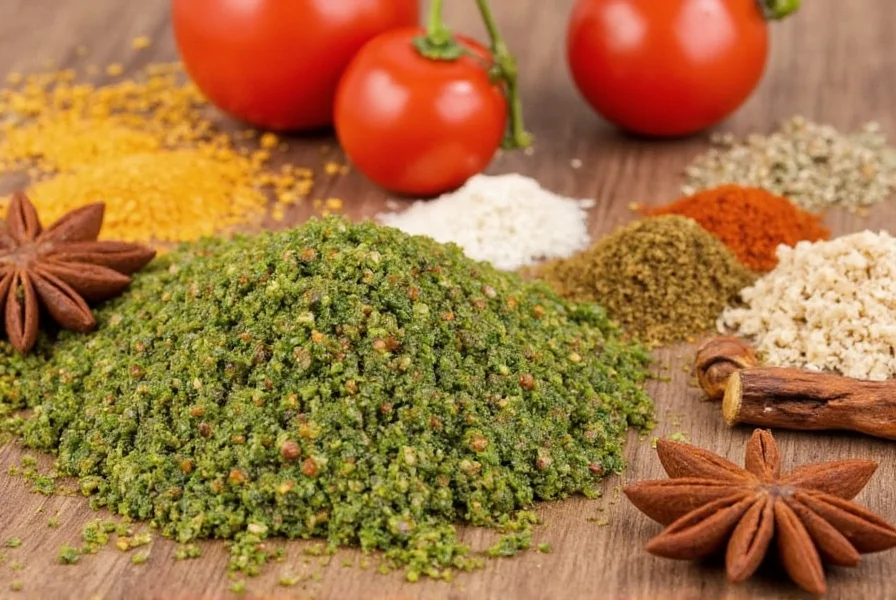
What is Chimichurri Seasoning?
Chimichurri is not a dry seasoning blend but a fresh, uncooked sauce with a chunky texture. Unlike dried spice mixes, authentic chimichurri is made by finely chopping fresh herbs and mixing them with olive oil, vinegar, and seasonings. The name "chimichurri" is believed to have originated from the Basque word "tximitxurri," meaning a mixture of various things.
Traditional Argentine chimichurri is characterized by its bright green color from fresh parsley, garlicky flavor, and tangy acidity from vinegar or lemon juice. It's typically served at room temperature and is known for its ability to cut through the richness of grilled meats while adding fresh herbal notes.
History and Origin of Chimichurri
Chimichurri has deep roots in Argentine and Uruguayan cuisine, particularly in the Pampas region where gaucho (cowboy) culture developed. While its exact origin is debated, the most accepted theory is that it was created by Argentine gauchos who needed a simple way to enhance the flavor of grilled meats during their travels.
Historical records suggest that the sauce evolved from Spanish and Italian immigrants who brought their culinary traditions to South America. The name "chimichurri" may have derived from the Basque word "tximitxurri" (a mixture of various things), or possibly from an English phrase "Jimmy's curry" that was mispronounced by Argentine locals.
Today, chimichurri is considered an essential part of Argentine culinary identity and is served with asado (Argentine barbecue) at nearly every traditional meal.
Key Ingredients in Authentic Chimichurri
Authentic chimichurri contains five core ingredients that create its signature flavor profile:
| Ingredient | Role in Chimichurri | Recommended Quantity |
|---|---|---|
| Fresh flat-leaf parsley | Provides the base flavor and vibrant green color | 1 cup (packed) |
| Garlic | Adds pungent depth and aroma | 3-4 cloves, minced |
| Extra virgin olive oil | Binds ingredients and adds richness | 1/2 cup |
| Red wine vinegar | Provides acidity and tang | 1/4 cup |
| Red pepper flakes | Adds subtle heat | 1/2-1 teaspoon |
Optional additions that some authentic recipes include:
- Oregano (1 teaspoon dried)
- Fresh oregano (1 tablespoon chopped)
- Lemon juice (1 tablespoon, as alternative to vinegar)
- Shallot (1 small, finely chopped)
- Bay leaf (1, steeped in oil and removed before serving)
Important: Authentic chimichurri is never blended smooth like pesto. It should maintain a chunky texture where you can see the individual herb pieces.
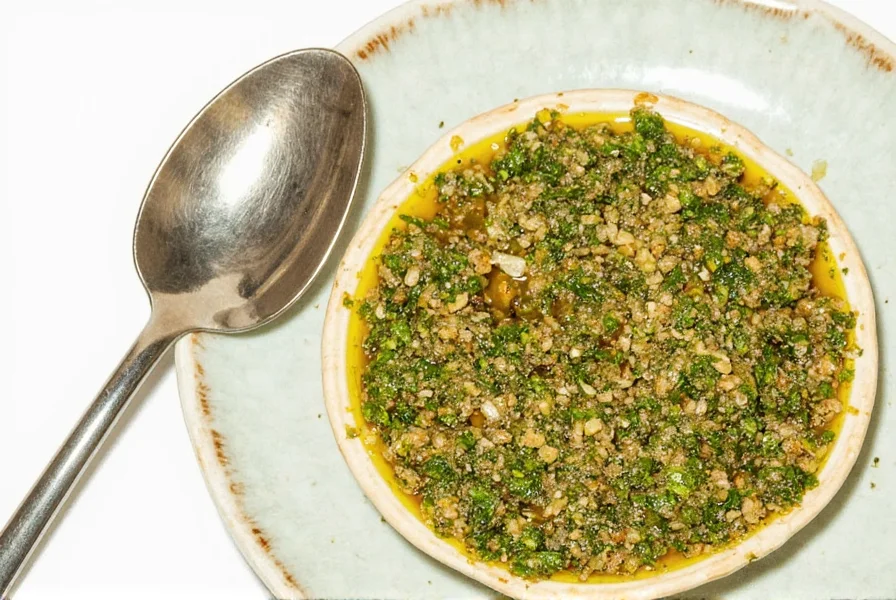
How to Make Authentic Chimichurri at Home
Here's the traditional method for making authentic chimichurri:
- Wash and thoroughly dry 1 cup of fresh flat-leaf parsley. Remove tough stems and finely chop the leaves.
- Finely mince 3-4 garlic cloves (about 1 tablespoon).
- Combine parsley, garlic, 1/2 teaspoon salt, and 1/2 teaspoon black pepper in a bowl.
- Add 1/4 cup red wine vinegar and 1/2 cup extra virgin olive oil.
- Stir in 1/2 teaspoon red pepper flakes (adjust to taste).
- Let the mixture sit at room temperature for at least 30 minutes to allow flavors to meld. For best results, refrigerate for 2-4 hours before serving.
Storage: Keep in an airtight container in the refrigerator for up to 1 week. The flavors actually improve after 24 hours as the ingredients meld together.
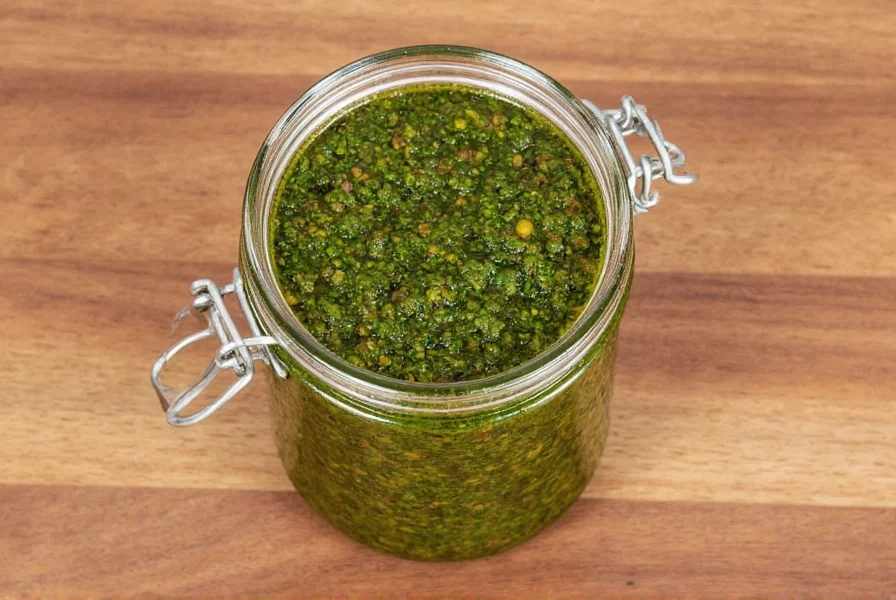
Creative Uses for Chimichurri Seasoning
While chimichurri is most famous as a steak topping, it has numerous versatile applications:
- Grilled meats: Brush on steaks, lamb chops, or chicken during the last few minutes of grilling.
- Marinade: Use as a marinade for tougher cuts of meat (2-4 hours for beef, 30 minutes for chicken).
- Vegetables: Toss with roasted potatoes, grilled corn, or sautéed mushrooms.
- Seafood: Drizzle over grilled fish or shrimp for a bright, herbaceous finish.
- Dips and spreads: Mix with Greek yogurt for a dip or spread on sandwiches.
- Pasta: Toss with cooked pasta and cherry tomatoes for a quick summer dish.
- Eggs: Top scrambled eggs or omelets for a flavor boost.
Pro tip: Chimichurri works best when served at room temperature. If refrigerated, let it sit out for 20-30 minutes before serving to allow the flavors to fully develop.
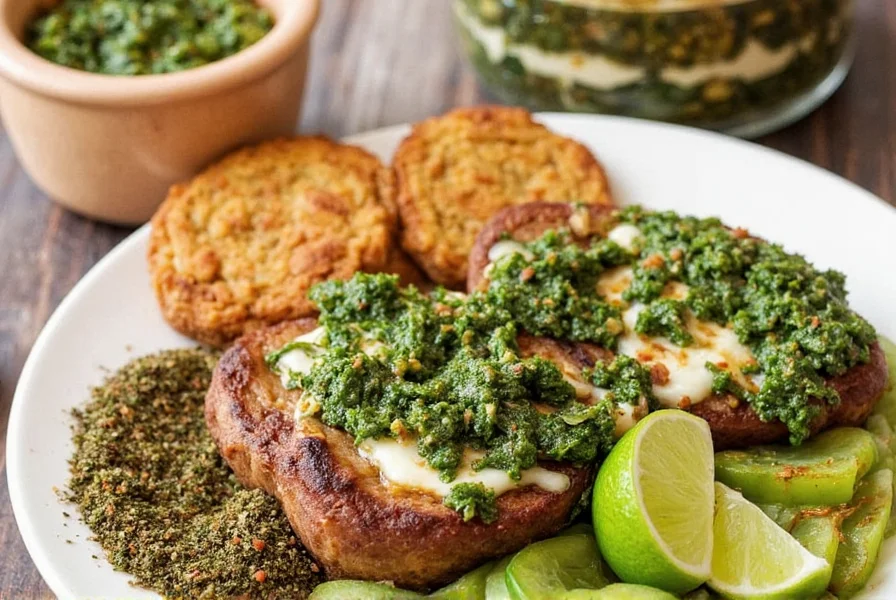
Chimichurri vs. Similar Sauces: Key Differences
Many people confuse chimichurri with other herb-based sauces. Here's how it differs:
| Sauce | Key Ingredients | Texture | Flavor Profile | Typical Uses |
|---|---|---|---|---|
| Chimichurri | Parsley, garlic, olive oil, vinegar, red pepper flakes | Chunky, unblended | Bright, tangy, herbal, slightly spicy | Grilled meats, vegetables |
| Pesto | Basil, pine nuts, Parmesan, olive oil, garlic | Smooth, blended | Rich, nutty, cheesy | Pasta, sandwiches, dips |
| Salsa Verde | Tomatillos, cilantro, jalapeños, onion, lime | Chunky or smooth | Tangy, citrusy, spicy | Mexican dishes, fish, eggs |
| Gremolata | Parsley, lemon zest, garlic | Very fine chop | Citrusy, fresh, herbal | Ossobuco, roasted meats |
Key distinction: Chimichurri is always uncooked and never blended smooth. The texture should be coarse enough that you can see individual herb pieces. Unlike pesto, it contains no cheese or nuts, and unlike salsa verde, it doesn't use tomatoes or tomatillos.
Frequently Asked Questions
Is chimichurri seasoning the same as chimichurri sauce?
Yes, the terms are used interchangeably. "Chimichurri seasoning" typically refers to the complete prepared sauce rather than a dry spice mix. Authentic chimichurri is always a fresh, wet sauce made with chopped ingredients, not a dried powder.
Can I use dried herbs for chimichurri?
Fresh herbs are essential for authentic chimichurri. Dried parsley lacks the vibrant flavor and texture of fresh. If absolutely necessary, use 1/3 the amount of dried parsley (about 1/3 cup), but the flavor will be significantly inferior. The fresh version is always recommended.
What's the difference between Argentine and American chimichurri?
Traditional Argentine chimichurri is simpler, typically containing just parsley, garlic, olive oil, vinegar, and red pepper flakes. American versions often include additional ingredients like oregano, shallots, or lemon juice. Argentine chimichurri also tends to have a higher ratio of parsley to other ingredients, resulting in a brighter, more herb-forward flavor.
How long does homemade chimichurri last?
Homemade chimichurri will stay fresh in an airtight container in the refrigerator for 5-7 days. The flavor actually improves after 24 hours as the ingredients meld together. For longer storage, you can freeze chimichurri in ice cube trays and then transfer the frozen portions to a freezer bag for up to 3 months.
Can chimichurri be used as a marinade?
Absolutely! Chimichurri makes an excellent marinade for meats, poultry, and vegetables. The acid in the vinegar or lemon juice helps tenderize proteins while infusing them with flavor. For best results, marinate meats for 2-4 hours (or up to overnight for tougher cuts), but avoid marinating fish for more than 30-60 minutes as the acid can start to "cook" the fish.
Is chimichurri supposed to be spicy?
Traditional chimichurri isn't inherently spicy, but many variations include red pepper flakes for heat. The level of spiciness is customizable—you can make it mild with just herbs and garlic, or add crushed red pepper flakes, fresh chili peppers, or even a dash of hot sauce for more heat. The base recipe focuses on herbal and acidic flavors rather than heat.
Buying Guide for Chimichurri Seasoning
If you're not ready to make your own, here are some tips for choosing quality store-bought chimichurri:
- Check the ingredients: Look for products with fresh herbs, olive oil, vinegar, and minimal additives. Avoid products with artificial flavors, preservatives, or excessive sugar.
- Texture matters: Authentic chimichurri should have a chunky texture, not a smooth puree. Avoid products that are completely blended.
- Check the origin: Products made in Argentina or by Argentine-owned companies are more likely to be authentic.
- Look for freshness indicators: Products with "best by" dates within 2-3 months are preferable to those with longer shelf lives, which often indicate more preservatives.
Some reputable brands include:
- La Cocina Chimichurri: Made with fresh herbs and olive oil, no artificial preservatives. Best for traditional Argentine-style chimichurri.
- Organic Chile & Herb Chimichurri: Organic ingredients, no added sugars or chemicals. Ideal for health-conscious consumers.
- Firefly Foods Chimichurri Paste: Concentrated paste form for maximum flavor. Great for professional chefs or serious home cooks.
When choosing a chimichurri product, look for transparency about ingredients and preparation methods. Authentic chimichurri should not contain any thickeners or stabilizers that would alter its traditional texture.
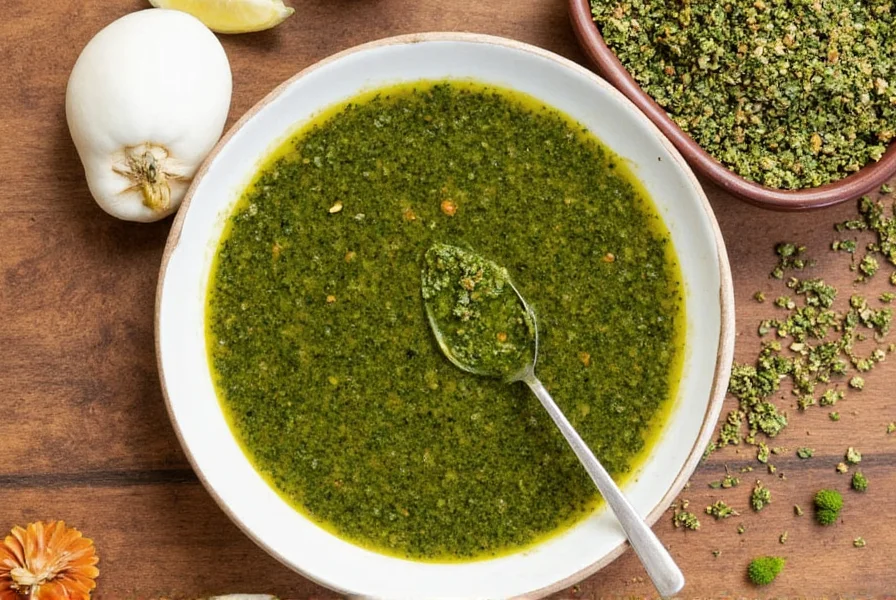
Conclusion
Chimichurri is a vibrant, uncooked herb sauce originating from Argentina that has become a global favorite for its bright, tangy flavor profile. Unlike dried spice blends, authentic chimichurri is made with fresh parsley, garlic, olive oil, vinegar, and red pepper flakes, with a characteristic chunky texture.
Whether you make it at home or purchase a quality store-bought version, chimichurri can elevate grilled meats, vegetables, and even simple dishes with its refreshing herbal notes and acidity. Its versatility and simplicity make it a must-have condiment for any kitchen.
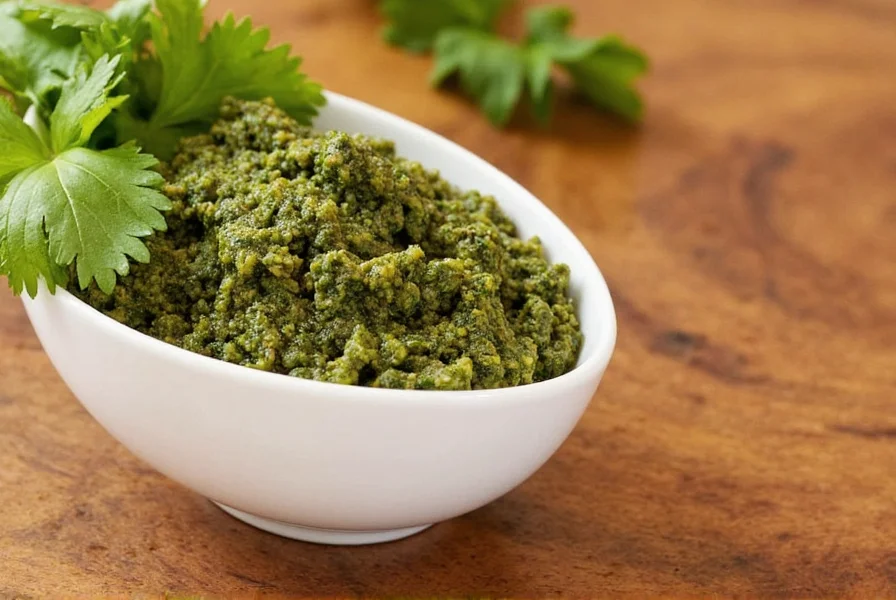

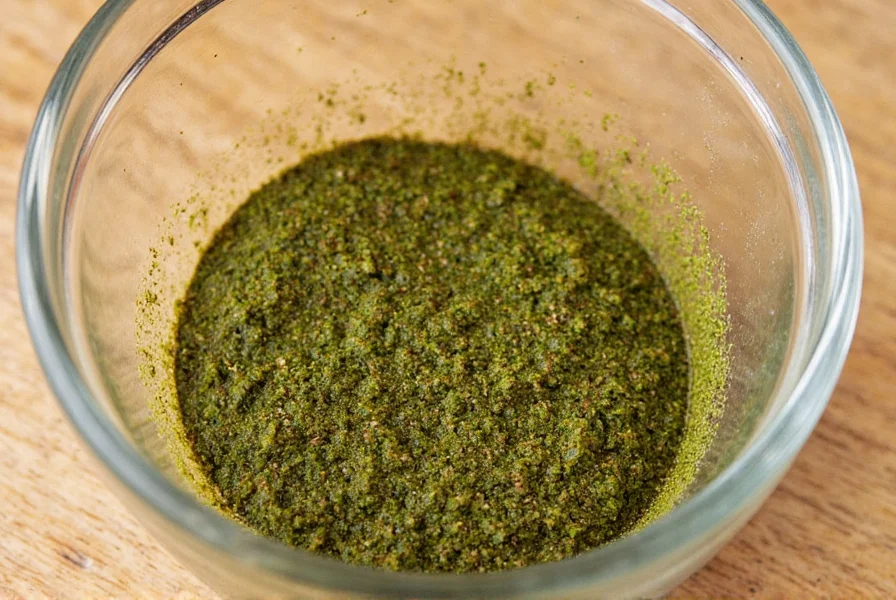









 浙公网安备
33010002000092号
浙公网安备
33010002000092号 浙B2-20120091-4
浙B2-20120091-4